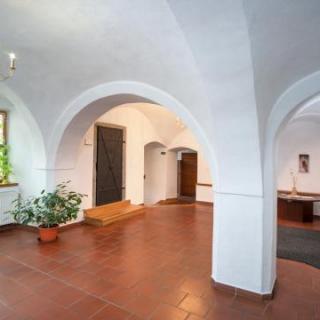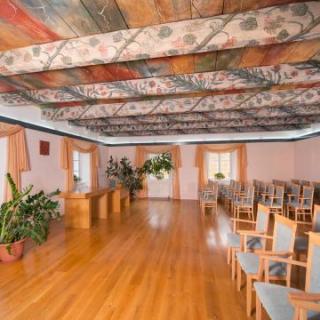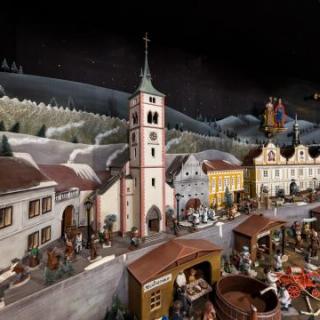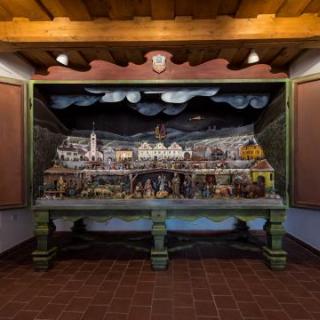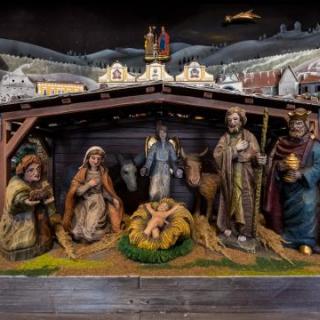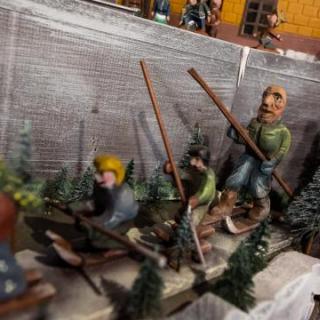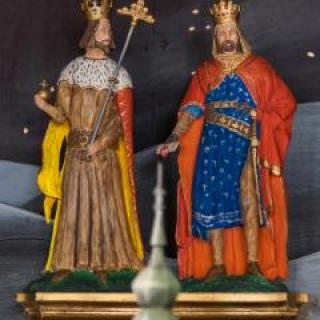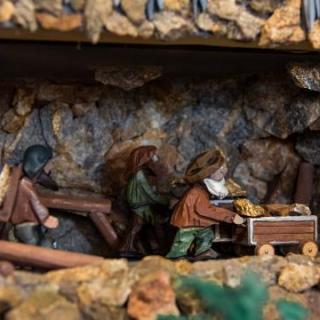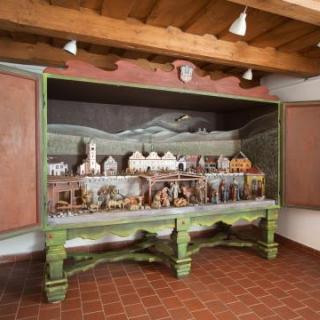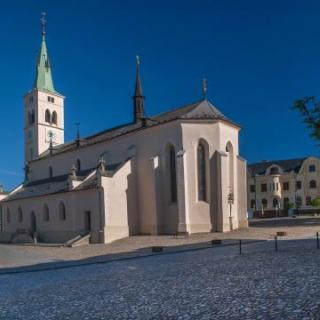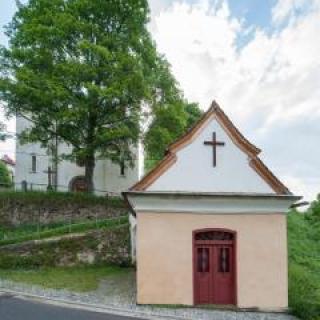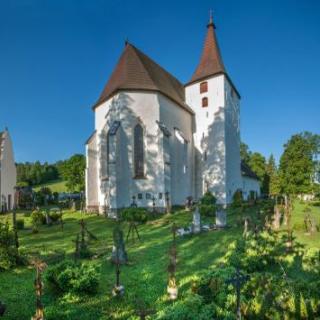Sights and monuments
Walking around the town square, you will see a number of interesting buildings. A number of sights are hidden in other nooks of our small town, too. Let´s introduce them now.
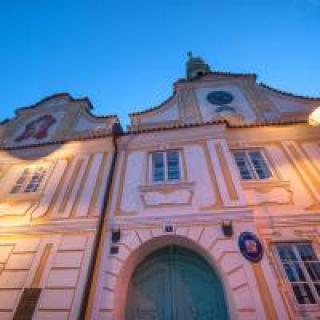
The town hall
The town hall was erected at this place in the second half of the 16th century. The original building was bought by the then Kašperk castle pledgee Jiří of Lokšany in 1539. He improved the house generously and connected it to the first water pipeline. The house and later town hall used to include a beer house, yard, brewery and garden. In the 17th and 18th century, the town hall building was rebuilt to its current Renaissance-Baroque shape.
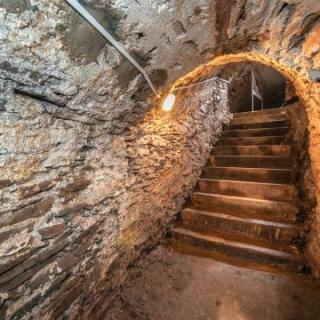
The town hall underground
The town hall underground used to serve as a storage and ice chamber of the house. There is a legend describing a labyrinth of dark underground drifts that are believed to connect the town with the Kašperk castle. Today, they are the wintering grounds for bats and this why they are open to the public only from June to September.
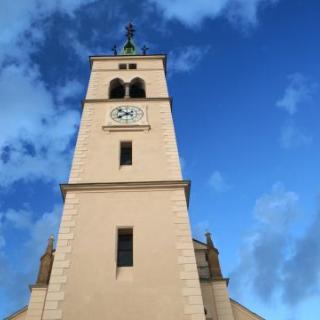
Church of St. Margaret
Originally dedicated to St. Linhart, the church of St. Margaret was built in the second half of the 14th century. The three-nave Gothic basilica hides first of all a Baroque interior dating back to the 18th century. Beautiful carved church benches and altar were carved by local carvers. The general wall/ceiling decoration of the church is of interest, too.
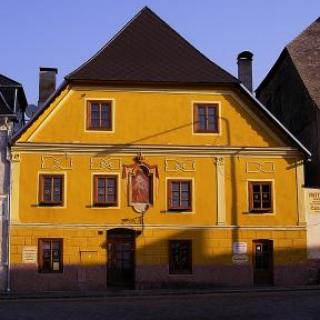
The Little Madonna
The house No. 11 belongs to the most significant monuments of Kašperské hory. It is of Gothic origin. In the centre of the facade, there is a wall painting of the Holy Virgin with the infant Jesus in a sculptured frame. The house is a private property now.
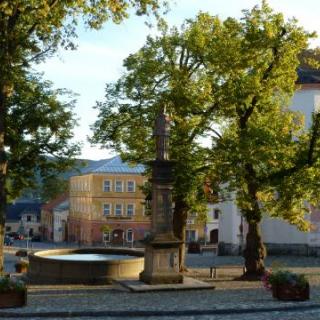
The rounded fountain
and the statue of John of Nepomuk
The rounded fountain with a stone frame carries the year of its construction (1899). A plinth dated to 1861 is placed in its proximity. It supports the pillar with a cornice with the cast iron statue of St. John of Nepomuk.
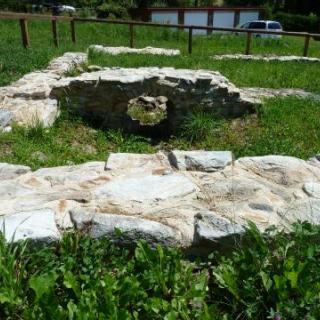
The gold ore processing plant
In 1988, a part of an old ore processing plant was uncovered. It consists of stone foundations of a wooden structure. As findings indicated, it was founded at the turn of the 13th and 14th century. In the ore processing plant, gold ore used to be roasted. From this place, it was conveyed to crushing plants and gold mills.
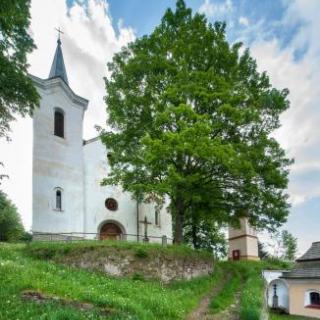
The church of Our Lady of Snows
and the chapel of the Our Lady of Klatovy
Built in the Neo-Romanesque style in 1850 – 1867, the pilgrimage church is the youngest of the three churches in Kašperské Hory. The chapel of Our Lady of Klatovy in its neighbourhood, called “Grantl”, was erected because of the tradition of the Marian pilgrimages, however, it capacity could not suffice after some time because of the rising number of pilgrims and this is why the new church was erected next to it.
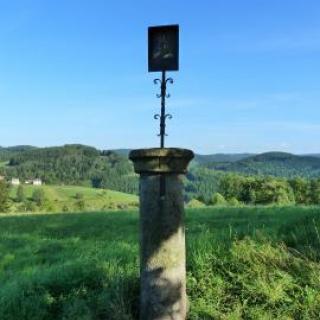
The pillory
dating back to 1630 used to be originally placed right in the square of Kašperské Hory for the purpose of public punishment and shame. As late as in 19th century, the stony pillory was removed from the town to the foot of the Gallows Hill and rebuilt into a devotional pillar.
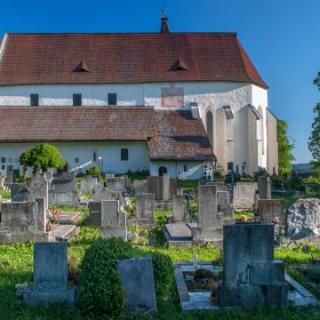
The church of St. Nicolas
and the chapel of St. Anna
Two structures hidden at the distance of 1.5 km from the town centre. The early Gothic church of St. Nicolas is a place where you can find frescos dating back to the years of its construction and marvellous painted wooden boarding beam ceiling (1700). The antiquity, austerity and unique acoustics of the massive three-nave basilica will enchant you.
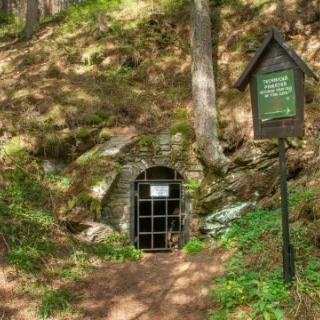
Gold mining remains
Hidden in forest covered slopes in the surroundings of Kašperské Hory, many old mining works remind of the old mining activities. They include both remains of drifts, shafts and pits, deep ditches and embankments piled as a result of open cast mining. Starting on the town square, the Gold Digger educational trail will take to these technical monuments.


